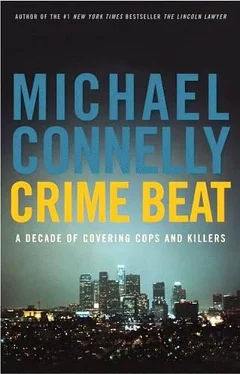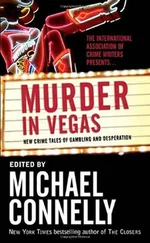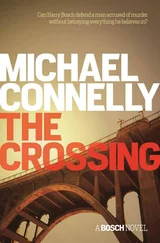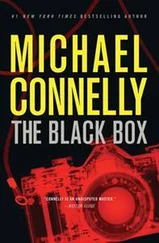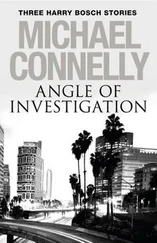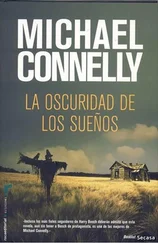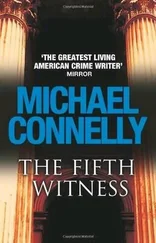Through the years, names contained in Weiss case files have often come up in unrelated cases, Orozco says. But detectives have never put a name on the tall blond man. Although a mob informant once told police that the men who killed Weiss were themselves killed to maintain organized crime’s veil of silence, Orozco believes the killers may still be alive and free.
Helvin has retired and Orozco handles other cases. But he still gets calls from informants offering street information on the Weiss killing. And sometimes he hears from law officers who have heard of the case in the course of other investigations.
“In other unsolved cases you usually hit the wall, where you’ve exhausted your investigation and you put it away,” he says. “This one isn’t like that. You can put it away but it keeps coming back.”
Orozco occasionally drives the same route Vic Weiss took on his last ride. He is waiting for the piece of data that will lead to an arrest, or the name of the blond man.
“Somebody will have to get jammed up, arrested on something else, and want to give us some help,” he says wistfully.
note: The Vic Weiss murder case remains unsolved.
VALLEY POLICE PUZZLE OVER VALLEY POLICE PUZZLE OVER MAN’S DEATH DURING RIOTS
Crimes: The Utah worker’s slaying, plus two other area killings, including of a 15-year-old boy, remain unsolved.
LOS ANGELES TIMES
May 25, 1992
Something made John Willers go back out there. But the reason is a mystery folded silently within a mystery.
On the night Los Angeles was torn open by the verdicts in the Rodney G. King beating case, Willers, 36, twice stepped out of the safety of his Mission Hills motel room and into the dark. The first time was with other guests curious about a car collision that was followed by shots being fired. The second time he was alone.
His body was found later in the middle of Sepulveda Boulevard. He had been shot to death in one of the most curious slayings to take place during the riots.
Now the detectives assigned to the April 29 killing, Willers’ family and the Salt Lake City construction crew he had come to Los Angeles with are left to wonder who killed the quiet but friendly tile setter and why. Most of all, however, they puzzle over what drew him out into the dangerous night while most everyone else stayed safely inside.
Los Angeles police have stopped short of classifying the killing as riot-related. There is too much that remains unknown, detectives said. But for those who knew Willers, the distinction of whether or not he was a riot victim seems trivial.
“It doesn’t matter,” said the foreman of the construction team that Willers worked on. “Somebody shot him for no reason at all. Los Angeles is a pretty place but you can keep it. I’ll be damn happy when this job is over and I’ll be out of here. And I will not be back. There is just no way to cope with this. It’s like being the victim of a terrorist act.”
The night of April 29, Willers, who was divorced and lived by himself in Salt Lake City, was staying at the Mission Hills Inn on Sepulveda near Chatsworth Street. He had moved through several states in the West in recent years, “going wherever the work was,” his foreman said.
He and the other seven members of the Kerbs Construction Co. crew had come to Los Angeles three days before the riots to do the tiling work at a supermarket under construction in Mission Hills.
Willers’ foreman and another tile setter he worked with agreed to discuss the incident if their identities were not revealed. They believe that they could be targeted as witnesses even though neither actually saw the shooting or the gunman.
They said members of the Kerbs crew were in their motel rooms watching reports of rioting on television when they heard cars racing outside on Sepulveda. They then heard the crash of cars colliding, followed by shots.
Police detective Woodrow Parks said the crash occurred about 10:45 p.m. when three people in one car chased two robbery suspects in another car. The fleeing vehicle circled the motel parking lot, and then collided head-on with the other car on Sepulveda. The suspected robbers fired shots at the three people trapped in the car that was chasing them, but missed. The gunmen then fled on foot.
The incident brought many guests of the motel outside, some just to look, some to help the injured or to direct traffic around the scene. Willers was in the crowd, according to fellow workers. He stayed outside until the injured motorists were taken by ambulances to a hospital and the police – operating under alert status because of the riots – quickly moved on. The two wrecked cars were pushed into the median of the road and left.
Willers and the other guests returned to their rooms, police said. But about half an hour later, Willers decided to go back out. He dropped by the room of two of his coworkers on the way out.
“We had the TV on and knew what was happening with the riots,” said one of the men Willers visited. “We told him he better stay inside. He didn’t say anything. He just left. He wanted to go out.”
A few minutes later, co-workers in several rooms heard shots outside.
“It was him – they had killed him,” Willers’ foreman said. “People went out on the balcony and saw him lying out there in the street. He had made a bad judgment, going back out there. I don’t know what he was thinking. People were shooting out there and yet he wanted to go back out.”
Meanwhile, less than five miles away, police in riot gear were dispersing a crowd that had gathered in front of the Foothill Division station in Pacoima. Rocks and bottles had been thrown at police. Shots were fired into the air and nearby trash bins set on fire.
Foothill Detectives Parks and Robert Bogison left that chaotic situation and rolled to the scene of the Willers shooting. They quickly conducted the on-site investigation while a squad of eight uniformed officers ringed them and kept guard.
“We were out there trying to do the investigation, wearing bullet-proof vests, not knowing if somebody else was going to start shooting,” Parks said. “We were very distracted. We had to keep one lane of traffic open and, every time a car came by, it would get a little tense.”
The detectives managed to locate two people who saw two teen-agers run from the area of the shooting, Parks said. One witness had asked the teen-agers what happened and they cursed at him and kept running. The witnesses said they did not see the teen-agers carrying guns.
He said that while the teen-agers are considered suspects, there is not enough known about the shooting to classify it as riot-related. Willers was white and the two teen-agers black, but there were no other disturbances reported in the immediate area that night.
Parks is seeking additional witnesses or anyone with information about the shooting and has put together a composite drawing of one of the teen-agers.
“The killing had nothing to do with looting, rioting, the things other deaths in the city were related to,” Parks said. “There is really no indication what it was about.”
Other motives common in street killings were easily dismissed. Willers had not been robbed. And Parks believes that the time lapse between the slaying and the car collision and shooting indicates that the incidents were unrelated.
What the detectives are left with is a case in which the victim apparently didn’t know his killer and had not even seen the shooter until moments before the slaying. The detectives said such cases are the most difficult to solve.
“We have very little to go on,” Parks said last week. “In a classic murder case, you spend a lot of time with the victim’s background and many times you get a direction from that. But in this case, the victim doesn’t know anybody in this city. He is just a random victim of L.A. violence. It doesn’t matter who he was or what he did, it’s not going to lead us to his killer.”
Читать дальше
